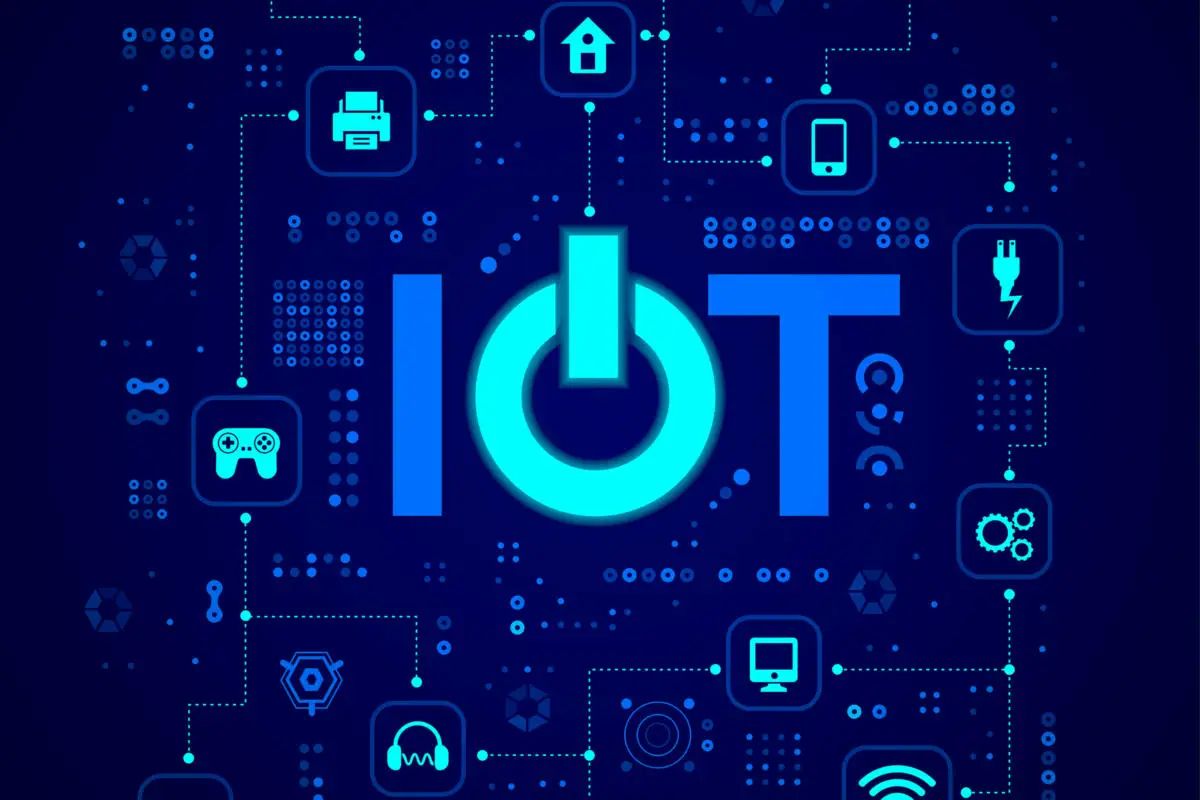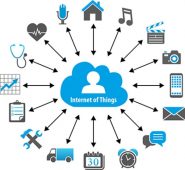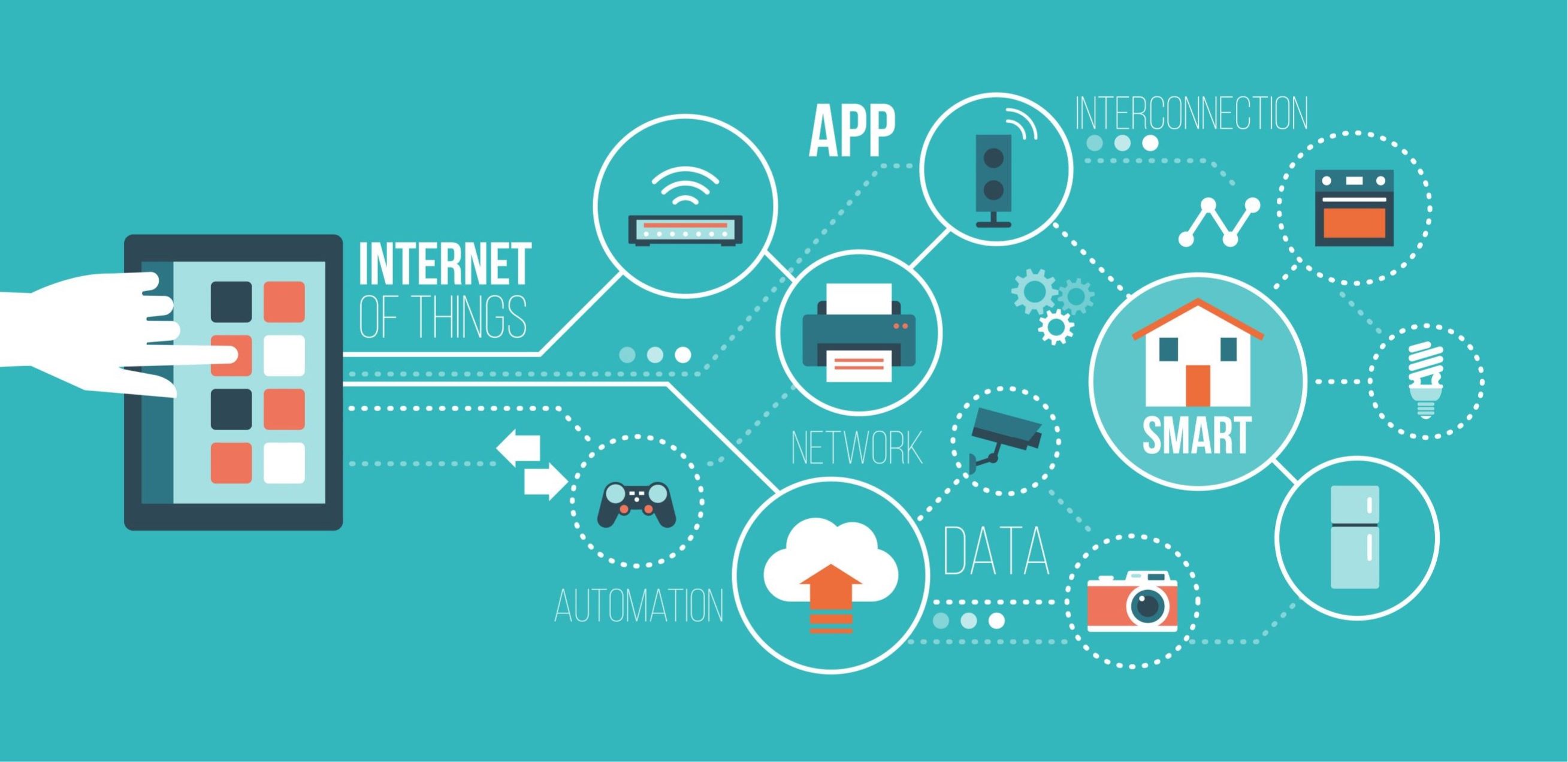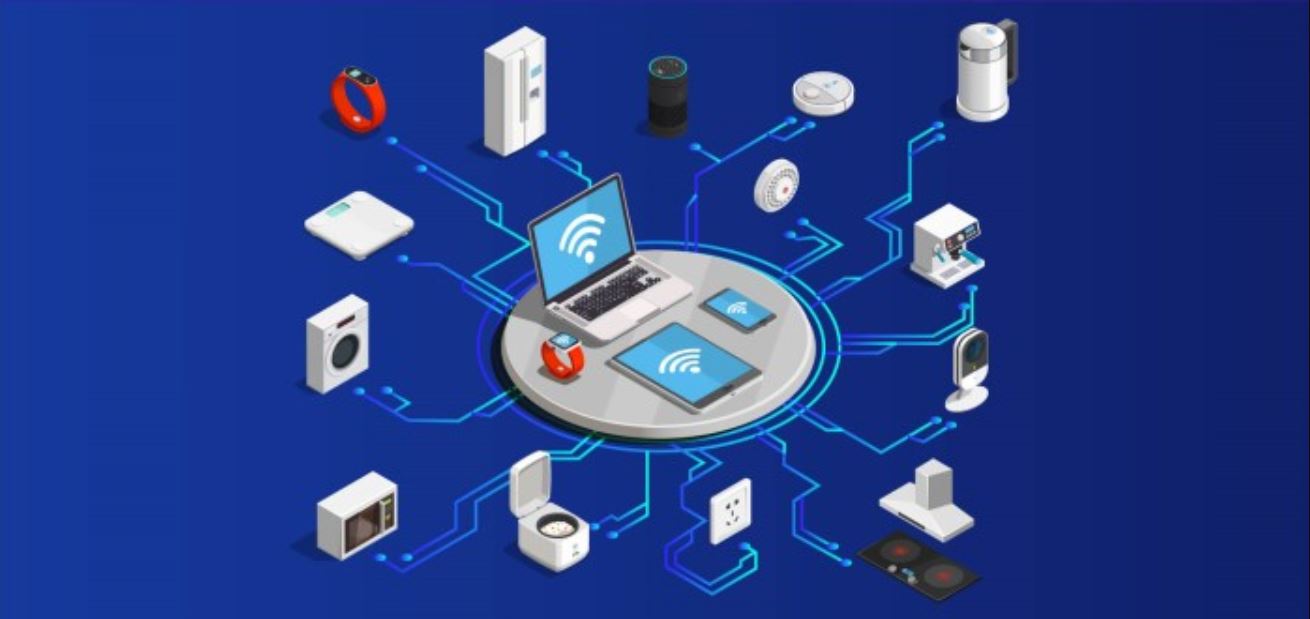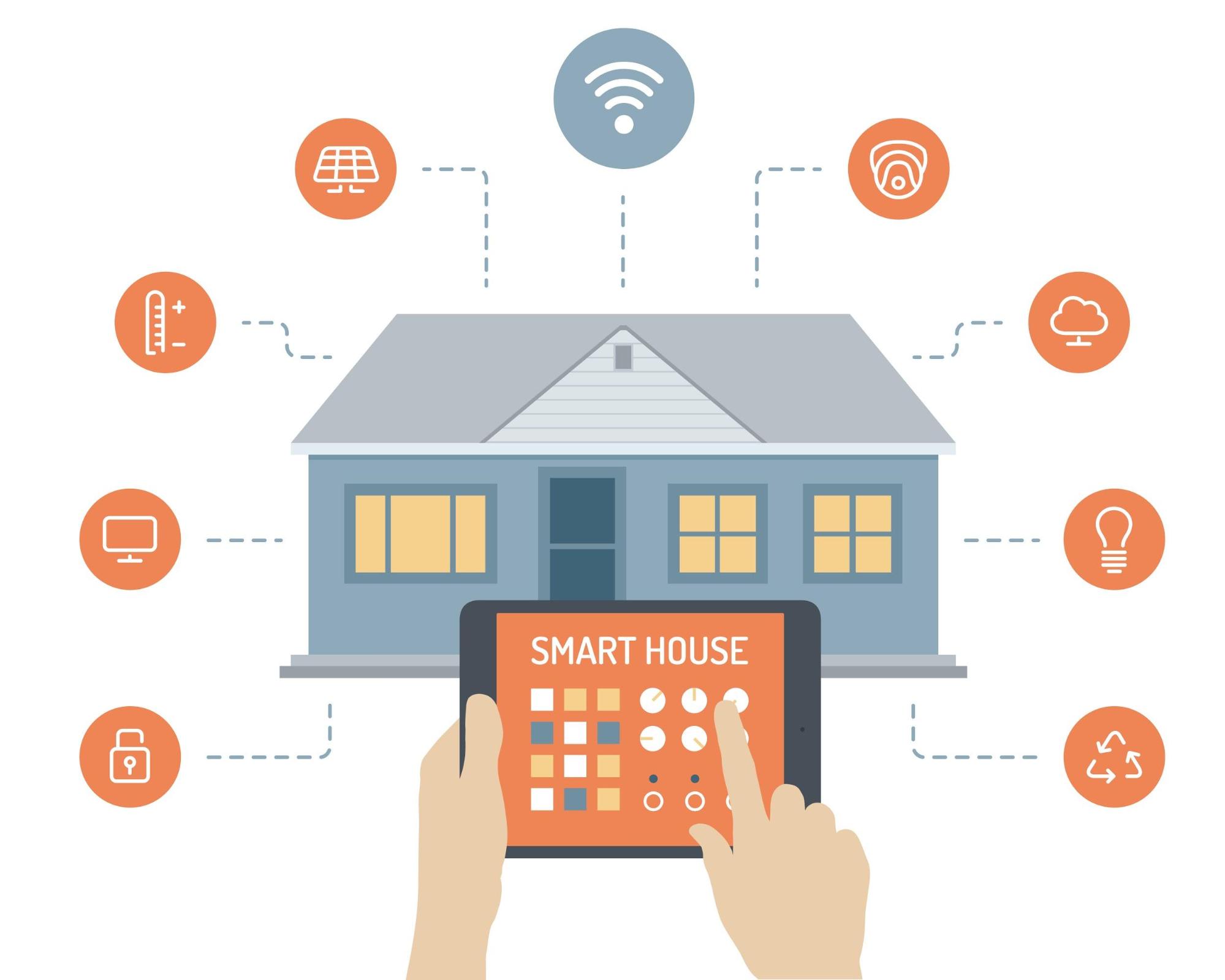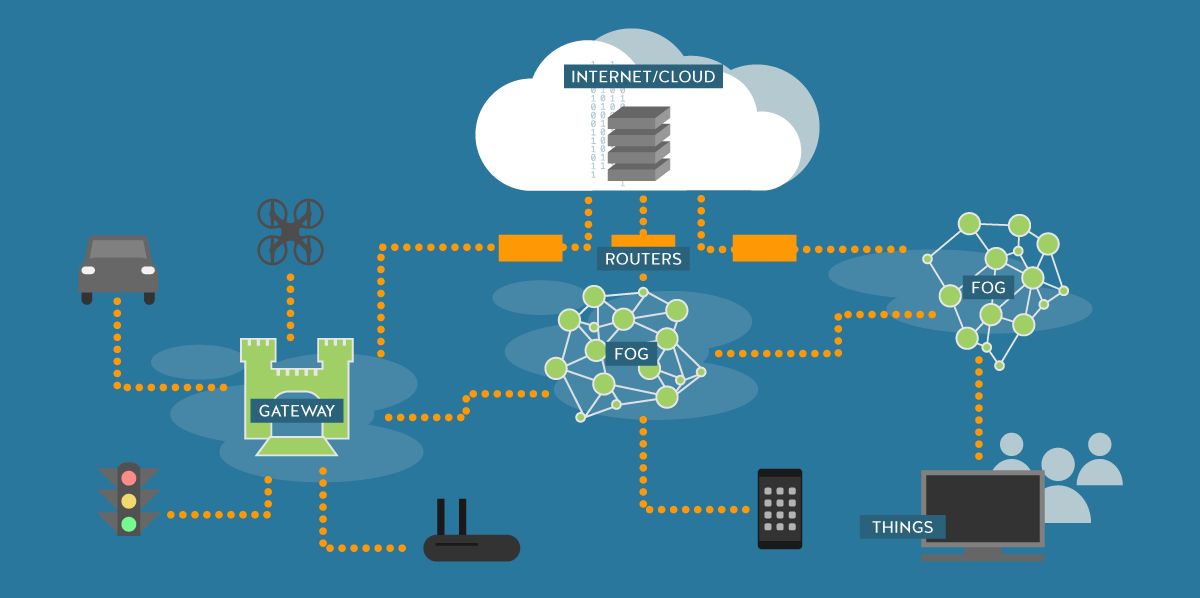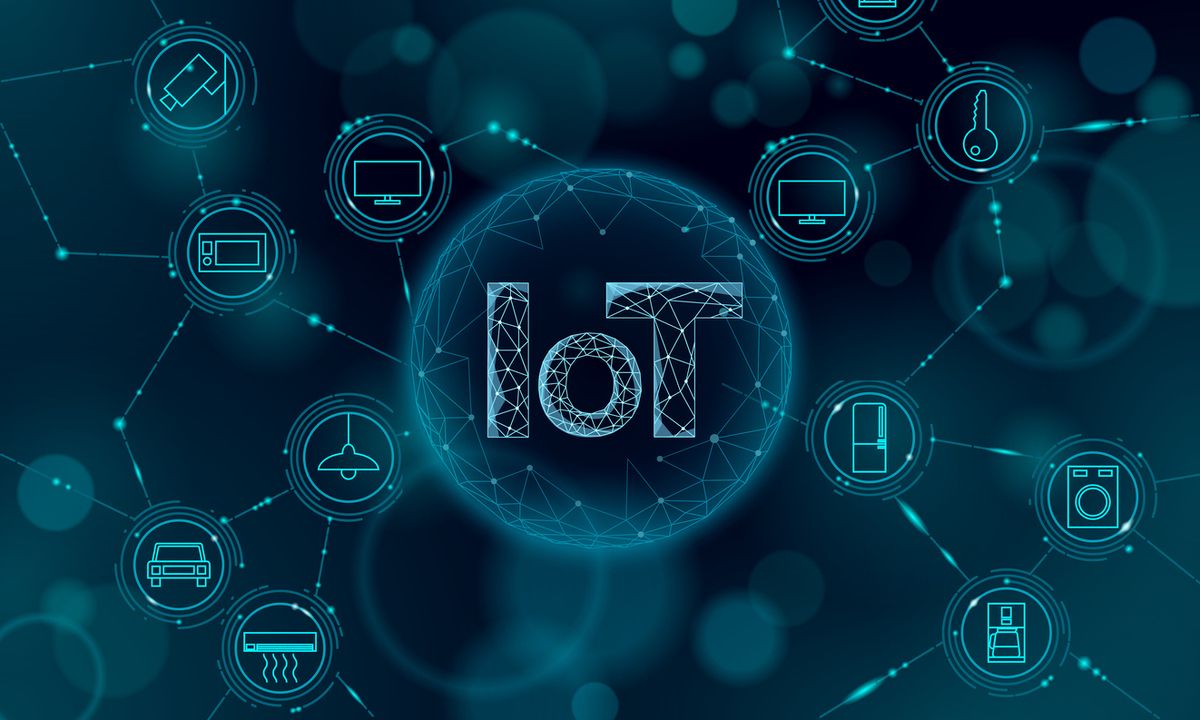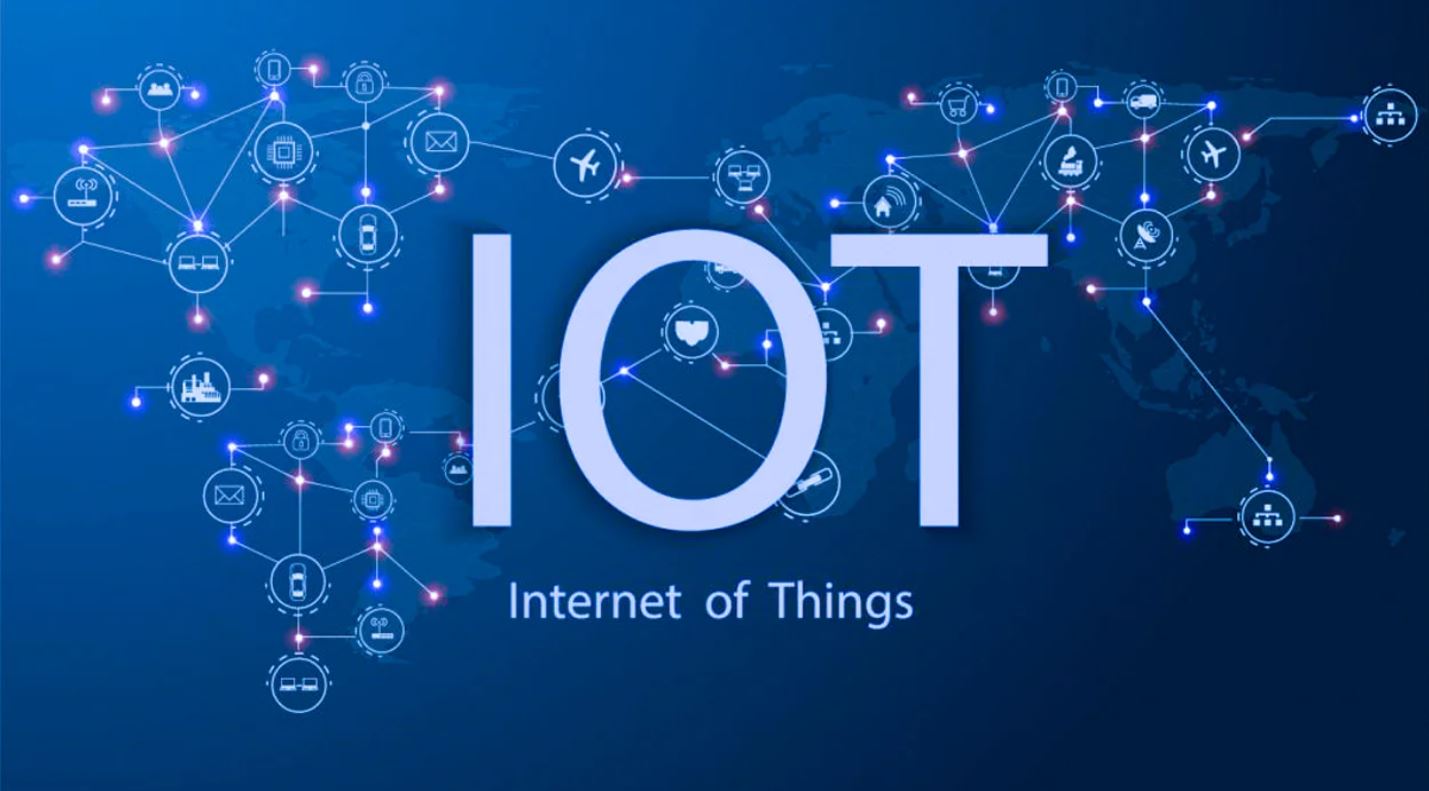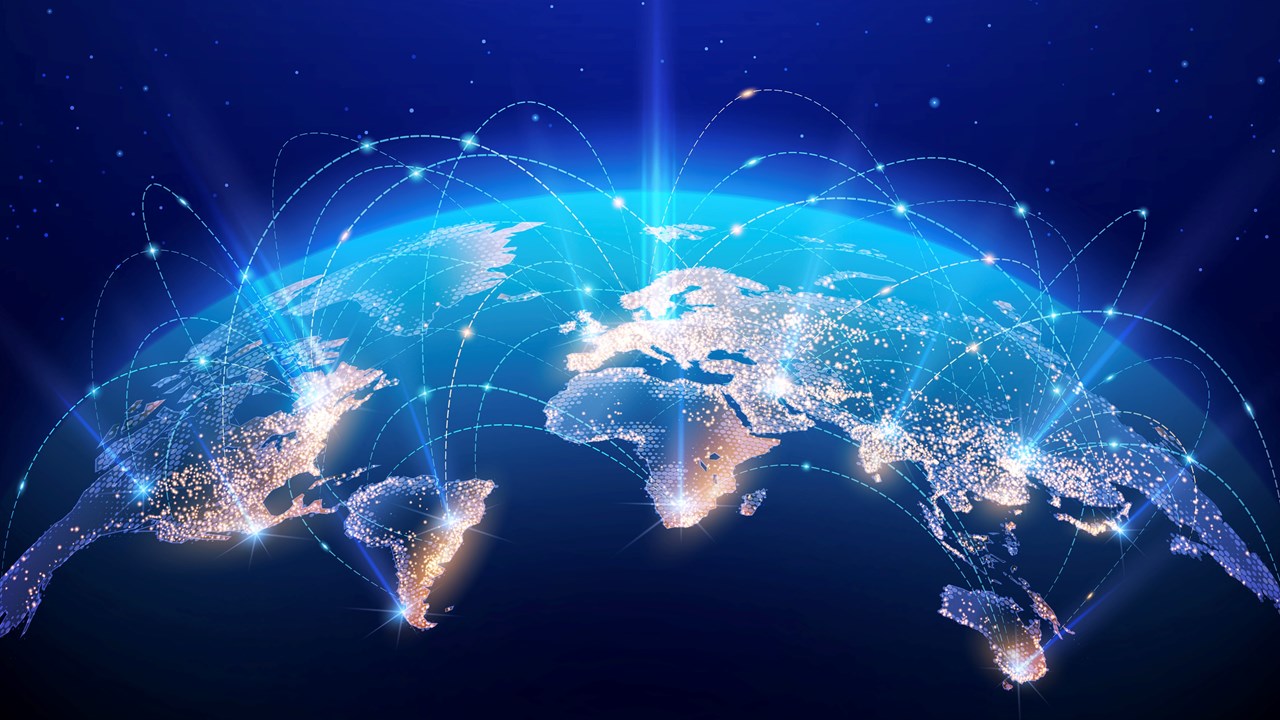Introduction
The Internet of Things (IoT) has become a prominent force in shaping the digital landscape. It refers to the network of physical devices, vehicles, appliances, and other objects embedded with sensors and software that allow them to connect and exchange data. This interconnectedness enables them to collect and share information, perform tasks, and communicate with each other.
The proliferation of IoT devices offers a wide range of benefits and opportunities in various sectors, including healthcare, manufacturing, transportation, smart cities, agriculture, retail, energy, and more. By leveraging these technologies, businesses and individuals can make data-driven decisions, automate processes, enhance operational efficiency, and improve overall experiences.
However, it is important to understand the market drivers behind this rapid growth in IoT adoption. These market drivers are the key factors that contribute to the expansion and widespread usage of IoT technologies in various industries.
In this article, we will delve into the market drivers for the Internet of Things and explore how they are influencing the adoption of this transformative technology.
Definition of Internet of Things (IoT)
The Internet of Things (IoT) is a network of interconnected physical devices, vehicles, appliances, and other objects that have the ability to collect and exchange data. These devices are embedded with sensors, software, and connectivity capabilities, enabling them to communicate with each other and with humans through the Internet.
The concept of IoT revolves around the idea of seamlessly integrating the digital and physical worlds. By enabling devices to connect and communicate, IoT creates a vast ecosystem that facilitates data sharing and automation. This allows for enhanced monitoring, control, and optimization of various processes and systems.
The IoT ecosystem consists of three main components:
- Devices and sensors: These are the physical objects equipped with sensors that capture data and perform specific functions. Examples include wearable devices, smart home appliances, industrial machines, and environmental sensors.
- Connectivity: The devices in an IoT network are connected through various means such as Wi-Fi, Bluetooth, cellular networks, or specialized IoT networks like LoRaWAN. This enables seamless data transfer and communication.
- Data processing and analysis: The data collected from IoT devices is sent to cloud-based platforms or edge computing systems. Here, it is processed, analyzed, and transformed into valuable insights that can drive decision-making and trigger automated actions.
IoT technology has revolutionized numerous industries by providing endless possibilities for automation, optimization, and innovation. It has the potential to transform how we live, work, and interact with the world around us.
Market Drivers for IoT
The Internet of Things (IoT) is experiencing rapid growth and widespread adoption, driven by a variety of factors. These market drivers are instrumental in shaping the trajectory of IoT technologies and their integration into different industries.
Below are some of the key drivers behind the expansion of the IoT market:
Increased Connectivity and Data Sharing:
The proliferation of high-speed internet connectivity and the widespread availability of wireless networks have paved the way for seamless connectivity between devices. This has facilitated the exchange of data in real-time, enabling devices to communicate and collaborate effectively. The increasing accessibility and affordability of connectivity have accelerated IoT adoption across industries.
Cost Efficiencies and Automation:
IoT technology offers significant cost efficiencies through automation and improved operational processes. By connecting devices and integrating them into centralized management systems, organizations can streamline operations, reduce manual intervention, and optimize resource allocation. This automation leads to increased efficiency, lower operational costs, and improved productivity.
Enhanced Operational Efficiency and Productivity:
The ability of IoT devices to provide real-time data and insights enables organizations to make data-driven decisions and optimize their operations. By gaining valuable visibility into processes, companies can identify bottlenecks, streamline workflows, and proactively address issues. This improves operational efficiency, minimizes downtime, and boosts overall productivity.
Improved Customer Experiences and Satisfaction:
IoT technology allows businesses to create personalized and seamless customer experiences. By gathering and analyzing customer data, organizations can anticipate and meet customer needs, providing tailored products and services. IoT-enabled devices can also enhance customer interactions, enable proactive support, and deliver innovative solutions, resulting in increased satisfaction and brand loyalty.
Opportunities for Innovation and New Business Models:
IoT opens up new possibilities for innovation and the creation of novel business models. The ability to collect and analyze large amounts of data from connected devices enables organizations to develop innovative products, services, and solutions. Additionally, IoT allows for the creation of new revenue streams by offering subscription-based services, outcome-based pricing, and data monetization opportunities.
These market drivers are fueling the rapid growth of IoT and propelling its integration into various sectors. As organizations recognize the immense potential of IoT technologies, they are investing in infrastructure, partnerships, and talent to harness the benefits IoT provides.
Increased Connectivity and Data Sharing
One of the primary market drivers for the Internet of Things (IoT) is the proliferation of connectivity and the seamless sharing of data. Advances in technology have made it easier than ever before to connect devices, enabling them to communicate and exchange information in real-time.
With the widespread availability of high-speed internet connectivity and the advent of wireless networks such as Wi-Fi and Bluetooth, IoT devices can now connect to the internet effortlessly. This connectivity allows for the seamless integration of devices into networks, creating a web of interconnected devices that can operate together in a cohesive manner.
IoT devices, equipped with sensors and embedded software, are able to collect vast amounts of data. This data encompasses a wide range of information, including environmental conditions, user behavior, machine performance, and more. The ability to collect such data opens up a world of possibilities for organizations.
By sharing and analyzing this data, businesses can gain valuable insights that aid in decision-making and strategic planning. For example, in the manufacturing industry, IoT devices can collect data on equipment performance, allowing for predictive maintenance and reducing downtime. In healthcare, IoT devices can monitor patients remotely and send vital signs to healthcare professionals, revolutionizing patient care.
Furthermore, the ability to share data seamlessly across devices and platforms enables the integration of IoT devices with other systems and applications. Through application programming interfaces (APIs) and cloud-based platforms, organizations can combine data from various sources to create a comprehensive view of their operations.
Increased connectivity and data sharing also facilitate collaboration within and between industries. For instance, in the automotive industry, connected cars can communicate with other vehicles, traffic lights, and infrastructure to optimize traffic flow, improve safety, and reduce congestion. In the agricultural sector, IoT devices can collect data on weather conditions, soil moisture levels, and crop health, allowing farmers to make informed decisions about irrigation, fertilization, and pest control.
However, as the number of connected devices grows, ensuring the security and privacy of data becomes a critical concern. Robust security measures must be implemented to protect sensitive information and prevent unauthorized access to IoT networks.
In summary, increased connectivity and data sharing are instrumental market drivers for the IoT industry. The ability to connect devices and share data seamlessly opens up opportunities for organizations to optimize operations, enhance decision-making, and drive innovation.
Cost Efficiencies and Automation
Cost efficiencies and automation are key market drivers for the adoption of Internet of Things (IoT) technologies by organizations across various industries. IoT enables businesses to streamline processes, reduce manual intervention, and optimize resource allocation, resulting in significant cost savings.
One of the main advantages of IoT is its ability to automate tasks and operations. By connecting devices and integrating them into centralized management systems, organizations can eliminate manual processes and achieve greater operational efficiency. For example, in manufacturing facilities, IoT-enabled sensors can monitor equipment performance, detect anomalies, and trigger maintenance requests automatically. This proactive approach allows organizations to address issues before they escalate into costly breakdowns or disruptions.
IoT also facilitates predictive maintenance, a cost-saving strategy that relies on real-time data from IoT devices to forecast equipment malfunctions or failures. By implementing predictive maintenance programs, organizations can optimize maintenance schedules, prevent unplanned downtime, and reduce maintenance costs. Instead of conducting routine maintenance on a fixed schedule, organizations can focus their resources on equipment that requires attention, maximizing efficiency and extending the lifespan of assets.
Additionally, IoT-driven automation improves resource utilization and efficiency. In industries such as logistics and supply chain, IoT devices can track the location, condition, and movement of goods, providing real-time visibility into inventory levels and optimization opportunities. This data-driven approach helps organizations reduce waste, optimize inventory management, and improve overall supply chain efficiency, leading to cost savings and enhanced customer satisfaction.
IoT technologies also enable organizations to monitor energy consumption and optimize energy usage, leading to significant cost reductions. IoT devices, such as smart energy meters, can collect real-time data on energy consumption patterns, allowing organizations to identify areas of inefficiency and implement energy-saving measures. For example, smart buildings equipped with IoT sensors can automatically adjust lighting, heating, and cooling based on occupancy and environmental conditions, optimizing energy use and reducing utility costs.
Besides operational cost savings, IoT can also drive cost efficiencies by enabling remote monitoring and maintenance. With IoT devices, organizations can remotely monitor and manage equipment, reducing the need for physical inspections and on-site visits. This leads to cost savings in terms of travel expenses, downtime, and personnel resources. Additionally, remote monitoring allows for timely identification of issues, enabling organizations to resolve problems quickly and efficiently, minimizing costly disruptions and repairs.
Overall, cost efficiencies and automation provided by IoT technologies are significant drivers for organizations to adopt and integrate IoT into their operations. By automating tasks, optimizing resource utilization, and implementing predictive maintenance strategies, businesses can achieve substantial cost savings, improve operational efficiency, and enhance their competitive edge in the market.
Enhanced Operational Efficiency and Productivity
Enhanced operational efficiency and productivity are crucial market drivers for the widespread adoption of Internet of Things (IoT) technologies across industries. IoT enables organizations to leverage real-time data and automation to streamline processes, optimize resource allocation, and enhance overall operational performance.
One of the key benefits of IoT is its ability to provide organizations with actionable insights and data-driven decision-making. IoT devices equipped with sensors and connected to networks can collect vast amounts of data, such as machine performance, environmental conditions, and user behavior. This data can be analyzed in real-time, allowing organizations to gain valuable insights into their operations.
With these insights, organizations can identify inefficiencies, bottlenecks, and areas for improvement within their processes. For example, in a manufacturing environment, IoT sensors can provide real-time data on machine status, allowing organizations to optimize production schedules, reduce downtime, and improve overall equipment effectiveness (OEE).
Additionally, IoT enables organizations to implement predictive and preventive maintenance strategies. By continuously monitoring equipment conditions and detecting anomalies, IoT devices can anticipate maintenance needs and trigger alerts or automated actions. This proactive approach minimizes unplanned downtime, reduces the risk of equipment failure, and increases operational efficiency.
Automation is another significant aspect of IoT that enhances operational efficiency and productivity. With IoT, organizations can automate routine tasks and processes, eliminating the need for manual intervention and reducing the risk of human error. For instance, in warehouse operations, IoT-enabled devices such as RFID tags can automate inventory tracking and management, streamlining processes and minimizing errors.
Moreover, IoT technologies enable organizations to optimize resource allocation and utilization. By gathering data on resource usage, IoT devices can provide insights into the optimal allocation of assets and personnel. For example, in transportation and logistics, IoT devices can track the location, condition, and availability of vehicles, allowing organizations to optimize routes, reduce fuel consumption, and improve delivery efficiency.
IoT also enhances productivity by enabling remote monitoring and control of operations. With IoT devices, organizations can remotely monitor and manage equipment, reducing the need for on-site personnel. This remote access and control capability saves time, eliminates the need for physical inspections, and enables organizations to respond rapidly to issues or emergencies.
Overall, enhanced operational efficiency and productivity are significant market drivers for IoT adoption. By leveraging real-time data, automation, and the ability to remotely monitor and control operations, organizations can optimize processes, reduce downtime, increase productivity, and gain a competitive edge in the market.
Improved Customer Experiences and Satisfaction
Improved customer experiences and satisfaction are vital market drivers behind the adoption of Internet of Things (IoT) technologies. IoT enables organizations to gather and analyze data from connected devices, allowing for personalized and seamless interactions with customers.
With IoT, organizations can collect data on customer behavior, preferences, and usage patterns. This data provides valuable insights that enable organizations to understand their customers better and tailor their products and services accordingly. For example, in the retail industry, IoT devices can track customer movements within stores, analyze buying patterns, and offer personalized recommendations or promotions to enhance the shopping experience.
IoT technology allows for the creation of connected and smart products that can anticipate and respond to customer needs. For instance, smart home devices can learn from user behavior and adjust settings automatically, providing personalized comfort and convenience. Similarly, wearable devices can track health and fitness data, offering personalized insights and recommendations for maintaining a healthy lifestyle.
Additionally, IoT enables organizations to provide proactive customer support and service through real-time monitoring and alerts. For example, in the automotive industry, connected cars can automatically detect maintenance issues and notify the owner or service center, allowing for prompt repair and minimizing inconvenience. This proactive approach to customer service enhances satisfaction and builds loyalty.
Moreover, IoT can enable organizations to gather feedback and insights directly from customers. Through IoT-enabled devices and sensors, organizations can collect data on usage patterns, product performance, and customer feedback. This data can then be analyzed to identify areas for improvement and drive product innovation. By incorporating customer feedback into product development and decision-making processes, organizations can ensure that their offerings align with customer expectations.
IoT also enables organizations to offer new and innovative services that enhance customer experiences. For example, in the hospitality industry, connected hotel rooms can provide personalized services like customized lighting, temperature control, and entertainment preferences to create a comfortable and memorable stay for guests. In smart cities, IoT technologies can improve the quality of life for residents by providing real-time information on transportation, energy usage, and public services, enhancing convenience and efficiency.
By leveraging IoT technologies to improve customer experiences, organizations can differentiate themselves in the market, build customer loyalty, and drive business growth. Through personalized interactions, proactive support, and innovative services, IoT enhances customer satisfaction and allows organizations to stay ahead of the competition.
Opportunities for Innovation and New Business Models
One of the primary market drivers for the Internet of Things (IoT) is the vast array of opportunities it presents for innovation and the creation of new business models. The ability to connect devices and gather real-time data opens up uncharted territories for organizations to explore and transform the way they operate.
IoT provides organizations with access to a wealth of data from connected devices and sensors. This data can be leveraged to gain valuable insights, generate innovative ideas, and drive product and service innovation. By analyzing the collected data, organizations can identify emerging trends, customer preferences, and market opportunities, enabling them to develop new solutions that meet evolving customer needs.
IoT also opens the door to new revenue streams and business models. Traditionally, many products have been sold as one-time transactions, but IoT enables businesses to adopt subscription-based models, outcome-based pricing, and pay-as-you-go models. For example, in the healthcare industry, IoT-enabled medical devices can be offered on a subscription basis, providing constant monitoring and personalized patient care.
Data generated by IoT devices can also be monetized through data-as-a-service (DaaS) models. Organizations can aggregate and anonymize the data they collect and sell it to third parties for research, product development, and decision-making purposes. This data-centric approach allows organizations to create new revenue streams and unlock additional value from their IoT deployments.
Furthermore, IoT encourages collaboration and partnerships between organizations across different industries. The convergence of physical and digital technologies promotes interdisciplinary collaboration and sparks innovation by combining expertise from various fields. For example, in the automotive industry, collaboration between car manufacturers and technology companies has led to the development of autonomous vehicles and advanced driver assistance systems.
IoT also fosters the concept of ecosystems, where multiple organizations collaborate to create integrated solutions. By bringing together complementary products and services, organizations can create seamless experiences for customers. For example, in the smart home ecosystem, IoT devices from different manufacturers can work together to provide a connected and cohesive experience for homeowners.
Additionally, IoT enables organizations to optimize their operations and improve efficiency by leveraging data and automation. By implementing IoT technologies, organizations can automate processes, reduce waste, and optimize resource utilization. These efficiency gains free up resources to focus on innovation and explore new business opportunities.
In summary, IoT presents abundant opportunities for innovation and new business models. By leveraging data insights, monetizing data, fostering collaborations, and adopting new revenue models, organizations can capitalize on the potential of IoT to drive innovation, create unique customer experiences, and stay at the forefront of their respective industries.
Key Industries Adopting IoT
The adoption of Internet of Things (IoT) technologies is widespread across various industries. Organizations in these industries are leveraging IoT to drive innovation, enhance operational efficiency, and improve decision-making. Below are some key industries that are actively embracing IoT:
Healthcare:
In the healthcare industry, IoT is transforming patient care and management. Connected medical devices and wearables allow for remote patient monitoring and real-time health data tracking. This technology enables healthcare providers to deliver personalized care, improve patient outcomes, and optimize resource allocation.
Manufacturing:
IoT has revolutionized manufacturing processes through the concept of smart factories. IoT-enabled sensors and devices monitor equipment performance, track inventory levels, and ensure supply chain efficiency. This leads to optimized production, reduced downtime, and enhanced quality control.
Transportation and Logistics:
In the transportation and logistics sector, IoT improves efficiency and safety. Connected devices provide real-time tracking of goods, allowing for streamlined supply chain management and improved asset utilization. IoT also enables predictive maintenance for vehicles and optimizes fleet management, reducing costs and enhancing customer satisfaction.
Smart Cities and Infrastructure:
IoT plays a vital role in building smart and sustainable cities. Connected infrastructure and sensors help in traffic management, waste management, energy distribution, and environmental monitoring. This enhances overall quality of life, reduces resource consumption, and improves urban planning and development.
Agriculture:
IoT technologies are transforming agriculture through precision farming. Connected sensors provide real-time data on soil conditions, weather patterns, and crop health. This allows farmers to optimize irrigation, automate fertilization, and mitigate pest infestations, resulting in improved crop yields and reduced environmental impact.
Retail and Consumer Goods:
Retailers are leveraging IoT to enhance customer experiences and optimize operations. IoT applications include smart shelves that track inventory levels, personalized shopping recommendations, and seamless checkout experiences. These advancements improve customer satisfaction, increase sales, and streamline supply chain management.
Energy and Utilities:
The energy and utilities sector benefits from IoT through smart grid systems and connected meters. IoT enables real-time monitoring of energy consumption, identifies energy inefficiencies, and optimizes energy distribution. This promotes energy conservation, helps manage demand, and supports the integration of renewable energy sources.
These key industries are at the forefront of IoT adoption, harnessing the potential of this transformative technology to drive innovation, improve efficiency, and create new business models. As IoT continues to evolve, more industries are expected to embrace the opportunities it offers for growth and competitive advantage.
Healthcare
The healthcare industry has emerged as a key adopter of Internet of Things (IoT) technologies, revolutionizing patient care and management. IoT has the potential to address some of the greatest challenges faced by healthcare providers, including remote patient monitoring, real-time health data tracking, and improved operational efficiency.
One of the prominent applications of IoT in healthcare is remote patient monitoring. IoT-enabled medical devices and wearables allow patients to be monitored outside of traditional clinical settings. These devices can track vital signs, medication adherence, and activity levels, providing healthcare providers with real-time data for better diagnosis, preventive care, and timely interventions.
IoT in healthcare also enables efficient management of chronic diseases. Patients with conditions such as diabetes, asthma, or heart disease can use IoT-enabled devices to self-monitor their health, track symptoms, and receive personalized treatment plans. This empowers patients to take an active role in their healthcare and helps healthcare professionals provide tailored care remotely.
Furthermore, IoT facilitates the integration of healthcare data from multiple sources, allowing for comprehensive patient records and streamlined healthcare processes. Connected electronic health record (EHR) systems enable secure storage, exchange, and analysis of patient data, improving coordination of care among healthcare providers and reducing errors due to incomplete information.
The use of IoT devices also enhances medication management and adherence. Connected pill dispensers can remind patients to take their medication at the prescribed time and notify healthcare providers if doses are missed. This reduces medication errors and helps improve patient compliance, thereby enhancing treatment outcomes.
IoT-driven telemedicine and telehealth services have gained significant traction in recent years. Through video conferencing, remote consultations, and virtual care platforms, healthcare providers can deliver medical advice, diagnosis, and treatment to patients from a distance. This is particularly valuable in rural or underserved areas where access to specialized healthcare services is limited.
Moreover, IoT contributes to the overall safety and well-being of patients and healthcare staff. IoT-enabled monitoring systems in hospitals can track the location of medical equipment, monitor hand hygiene compliance, and automatically detect potential safety hazards. This improves patient safety, reduces the risk of healthcare-associated infections, and enhances the overall quality of care.
As healthcare providers adopt IoT technologies, they face challenges related to data security, privacy, and interoperability. Protecting patient data and ensuring compliance with regulations is of paramount importance. Robust security measures and adherence to privacy guidelines are essential to maintain patient trust and mitigate the risks associated with data breaches.
In summary, IoT has the potential to transform the healthcare industry by improving patient care, enabling remote monitoring, and enhancing operational efficiency. Through remote patient monitoring, integration of healthcare data, telemedicine services, and improved medication management, IoT empowers healthcare organizations to provide personalized and timely care, ultimately leading to better patient outcomes.
Manufacturing
The manufacturing industry is at the forefront of Internet of Things (IoT) adoption, utilizing connected devices and sensors to drive innovation and optimize operations. IoT technologies have transformed traditional manufacturing processes, leading to improved efficiency, enhanced quality control, and increased productivity.
One of the key applications of IoT in manufacturing is the concept of smart factories. IoT-enabled sensors and devices are deployed throughout the manufacturing environment to monitor equipment performance, track inventory levels, and ensure smooth supply chain operations. Real-time data from sensors allows organizations to make data-driven decisions, optimize production schedules, and reduce downtime.
Predictive maintenance is another crucial application of IoT in manufacturing. By continuously monitoring equipment conditions using IoT sensors, organizations can detect signs of wear, predict maintenance needs, and proactively schedule maintenance activities. This approach reduces unplanned downtime, improves asset utilization, and enhances operational efficiency.
IoT technology also enables organizations to implement quality control measures at various stages of the manufacturing process. Connected sensors can monitor and collect data on crucial parameters such as temperature, humidity, and vibration. This real-time data helps identify deviations from quality standards, facilitating immediate corrective actions and improving overall product quality.
IoT devices and automation systems play a significant role in optimizing resource allocation and utilization in manufacturing. IoT enables real-time tracking and analysis of inventory levels, allowing organizations to manage inventory more efficiently and reduce waste. Additionally, IoT-driven automation systems increase productivity by automating repetitive tasks, minimizing errors, and freeing up human resources for more value-added activities.
Furthermore, IoT fosters connectivity and collaboration across the manufacturing ecosystem. By integrating IoT devices with enterprise resource planning (ERP) systems, organizations gain real-time visibility into supply chain operations. This enables improved demand forecasting, streamlined procurement, and enhanced coordination with suppliers and partners.
IoT technologies also facilitate the monitoring of environmental conditions in manufacturing facilities. Connected sensors can detect changes in factors such as temperature, humidity, and air quality. This information helps maintain optimal working conditions for employees, ensures compliance with safety regulations, and mitigates risks of equipment failure or product damage.
While IoT brings several benefits to manufacturing, there are challenges related to data security, interoperability, and legacy system integration. Protecting sensitive manufacturing data and intellectual property is essential for companies to maintain a competitive advantage and foster trust with partners and customers. Ensuring seamless integration between IoT devices and existing infrastructure is also vital to maximize the benefits of IoT technology.
In summary, IoT is transforming the manufacturing industry, driving innovation, and improving efficiency. Whether through smart factories, predictive maintenance, quality control, resource optimization, or improved collaboration, IoT technologies enable organizations to optimize operations, increase productivity, and remain competitive in the global market.
Transportation and Logistics
The transportation and logistics industry is undergoing a significant transformation with the adoption of Internet of Things (IoT) technologies. IoT is revolutionizing the way goods are transported, tracked, and managed, leading to enhanced efficiency, improved safety, and increased customer satisfaction.
One of the key applications of IoT in transportation and logistics is real-time asset tracking. IoT devices equipped with GPS technology enable organizations to track the movement of goods, vehicles, and assets throughout the supply chain. This real-time tracking provides visibility into the location, status, and condition of shipments, enabling organizations to optimize routes, reduce delays, and improve overall logistics management.
IoT also enables efficient fleet management in the transportation industry. Connected vehicles equipped with IoT sensors can gather data on driver behavior, fuel consumption, and vehicle health. This data allows organizations to monitor and optimize fuel efficiency, vehicle maintenance, and driver performance, ultimately reducing costs and improving safety and compliance.
Predictive maintenance is another significant application of IoT in transportation and logistics. By leveraging data from IoT sensors, organizations can predict the maintenance needs of their vehicles and proactively schedule repairs. This approach reduces unexpected breakdowns, minimizes downtime, and optimizes fleet utilization.
Furthermore, IoT technologies improve the safety and security of transportation operations. Connected devices, such as cameras and sensors, can detect and report unsafe driving behavior, accidents, and security breaches. This real-time information allows organizations to take immediate action, implement preventive measures, and ensure the safety of drivers, cargoes, and assets.
IoT in transportation and logistics also enables organizations to optimize the supply chain through improved inventory management and visibility. Connected sensors can monitor and track inventory levels in real-time, allowing for accurate demand forecasting, streamlined procurement, and reduced stock-outs. Additionally, IoT data provides valuable insights into supply chain performance, enabling organizations to identify areas for improvement and optimize overall operational efficiency.
Another key benefit of IoT in transportation and logistics is the ability to provide accurate and real-time information to customers. IoT-driven visibility systems give customers access to real-time tracking and delivery updates, enhancing transparency, reducing customer inquiries, and improving overall customer satisfaction.
The adoption of IoT in transportation and logistics does come with challenges, including data security, privacy concerns, and the need for interoperability among different systems. Organizations need to ensure that data transmitted across IoT devices is encrypted and protected to maintain the integrity and confidentiality of sensitive information.
In summary, IoT technologies are transforming the transportation and logistics industry by improving tracking capabilities, enhancing fleet management, optimizing supply chains, and increasing customer satisfaction. By leveraging the power of IoT, organizations can drive operational efficiency, reduce costs, and gain a competitive advantage in the ever-evolving transportation and logistics landscape.
Smart Cities and Infrastructure
The concept of smart cities and infrastructure has gained significant momentum with the adoption of Internet of Things (IoT) technologies. IoT is transforming urban environments by enabling connected systems, data-driven decision-making, and improved sustainability. Smart cities leverage IoT to enhance efficiency, optimize resource allocation, and improve the overall quality of life for residents.
One of the key applications of IoT in smart cities is smart and connected infrastructure. IoT sensors and devices are deployed across various aspects of city infrastructure, including transportation, energy, waste management, water distribution, and environmental monitoring. These sensors collect real-time data, allowing for better monitoring, analysis, and management of these vital systems.
Smart city transportation systems leverage IoT to optimize traffic flow, reduce congestion, and enhance mobility. Connected sensors and traffic management systems collect data on traffic patterns, volume, and congestion, enabling real-time adjustments and smarter routing. This results in reduced travel times, lower fuel consumption, and improved overall transportation efficiency.
IoT technologies also enable smart energy management in cities. Connected energy grids and IoT-enabled devices monitor energy consumption patterns, optimize energy distribution, and enable demand response mechanisms. This leads to improved energy efficiency, reduced greenhouse gas emissions, and greater use of renewable energy sources.
Additionally, IoT plays a vital role in waste management within smart cities. Connected waste bins and sensors track levels of waste accumulation, optimizing waste collection routes and schedules. This reduces unnecessary pickups, decreases costs, and contributes to a cleaner and more sustainable urban environment.
Water management is another area where IoT enhances efficiency and sustainability. IoT devices and sensors monitor water usage, identify leaks or abnormalities, and enable remote control of water distribution systems. Real-time data and analytics help detect anomalies, prevent water wastage, and optimize water resource allocation to ensure efficient use.
In terms of environmental monitoring, IoT devices provide real-time data on air quality, noise pollution, and weather conditions. This data enables city authorities to take proactive measures to improve air quality, mitigate pollution, and enhance public safety. Citizens can also access this information through smart city applications, allowing them to make informed decisions about their daily activities and well-being.
Furthermore, IoT fosters citizen engagement and participation in smart cities. Through connected devices and platforms, citizens can access real-time information, report issues, and engage in dialogue with city authorities. This collaboration enables cities to better understand the needs and concerns of residents, making planning and decision-making more inclusive and citizen-centric.
While the benefits of smart cities and IoT are undeniable, challenges such as data security, privacy, and interoperability must be addressed. Protecting sensitive data and ensuring its secure transmission between IoT devices is of paramount importance. Open standards and interoperability frameworks also need to be established to allow different IoT devices and systems to seamlessly communicate and operate together.
In summary, IoT technologies are instrumental in transforming cities into smart and sustainable environments. By leveraging connected infrastructure, real-time data, and citizen engagement, smart cities can optimize resource allocation, minimize environmental impact, and enhance the overall quality of life for residents.
Agriculture
The agriculture industry has been revolutionized by the adoption of Internet of Things (IoT) technologies, ushering in a new era of precision agriculture and sustainable farming practices. IoT enables farmers to make data-driven decisions, optimize resource allocation, and enhance crop yields while minimizing environmental impact.
One of the key applications of IoT in agriculture is precision farming. IoT sensors deployed in fields collect real-time data on soil moisture, temperature, humidity, and nutrient levels. This information allows farmers to precisely monitor conditions and apply resources, such as water and fertilizers, only where and when they are needed. Precision farming optimizes resource usage, minimizes waste, and improves crop productivity.
IoT facilitates remote monitoring and management of farms, enhancing operational efficiency. Connected devices and IoT platforms enable farmers to remotely monitor livestock, track their health, and detect any potential issues. For example, connected sensors on dairy farms can monitor milk production, cow behavior, and feeding patterns. This data helps farmers detect health issues promptly, optimize feed and medication, and improve overall herd management.
Irrigation management is another critical aspect of agriculture that benefits from IoT. IoT sensors can collect data on soil moisture, weather patterns, and evapotranspiration rates. Based on this information, farmers can automate irrigation systems, schedule watering at optimal times, and minimize water usage. This not only conserves water resources but also helps prevent overwatering or under-watering, resulting in healthier crops and improved yields.
IoT technologies also play a significant role in crop and pest management. Connected sensors can detect and monitor pest activity, weather conditions, and environmental factors that influence crop health. This data enables farmers to implement timely pest control measures and optimize crop protection practices, mitigating crop damage and reducing the use of pesticides.
Furthermore, IoT-driven livestock monitoring promotes animal welfare and improves farm productivity. Wearable sensors on livestock can track vital signs, behavior, and feeding patterns. This data helps farmers observe animal health, identify signs of distress or disease, optimize feeding practices, and ensure optimal productivity in livestock farming.
IoT in agriculture also involves data analytics and predictive modeling. By analyzing historical data and capturing real-time information, IoT-driven analytics can generate valuable insights and predictive models. These insights aid in decision-making, such as determining optimal planting and harvesting times, forecasting crop yield, and identifying factors affecting crop health.
However, IoT deployment in agriculture does come with challenges such as data security, connectivity in remote areas, and the need for farmer training and support. Ensuring secure transmission and storage of sensitive farm data is vital. Reliable connectivity and network infrastructure are also crucial for IoT devices to transmit data in real-time from remote agricultural locations.
In summary, IoT technologies are transforming the agriculture industry by enabling precision farming, optimizing resource usage, and enhancing crop productivity while promoting sustainable practices. By leveraging IoT devices, data analytics, and real-time monitoring, farmers can maximize yields, reduce environmental impact, and ensure long-term sustainability in agriculture.
Retail and Consumer Goods
The retail and consumer goods industry is undergoing a significant transformation with the adoption of Internet of Things (IoT) technologies. IoT is revolutionizing the way consumers interact with products and enabling retailers to enhance customer experiences, streamline operations, and drive business growth.
One of the key applications of IoT in retail is inventory management. IoT devices such as smart shelves and RFID tags enable retailers to track inventory levels in real-time. This ensures accurate stock visibility, reduces stockouts, and enables automatic restocking and replenishment. By automating inventory management, retailers can optimize product availability, minimize supply chain costs, and improve customer satisfaction.
IoT also enables personalized shopping experiences through connected devices. Smart mirrors and digital signage provide personalized recommendations based on customer preferences and shopping history. IoT-powered beacon technology allows retailers to send location-based offers and notifications to shoppers’ mobile devices, enhancing engagement and driving sales.
Supply chain optimization is another crucial facet of IoT in retail. Connected devices enable real-time tracking and monitoring of goods throughout the supply chain, from production to delivery. This enhances transparency, improves efficiency, and enables predictive analytics for demand forecasting and inventory planning.
In-store analytics is another key application of IoT in retail. IoT sensors and cameras can collect data on customer footfall, navigation patterns, and product interactions. Retailers can use this data to optimize store layouts, improve product placement, and enhance overall store design for an optimized customer experience.
IoT also enables smart payments and checkout processes. Connected payment systems, such as contactless payment terminals, enable faster and more seamless transactions. IoT-enabled self-checkout systems improve efficiency and reduce waiting times, enhancing the overall shopping experience and improving customer satisfaction.
Connected devices in consumer goods, such as smart home appliances and wearables, are also fueling IoT adoption in the retail industry. These devices, interconnected with IoT platforms, allow consumers to remotely manage and control their home environments. For retailers, this opens up new opportunities for personalized marketing and targeted product recommendations.
IoT technology also streamlines after-sales support and customer service. Connected devices can issue alerts and send diagnostic data to manufacturers or retailers, allowing for proactive maintenance and prompt issue resolution. This reduces downtime and improves customer satisfaction by ensuring products are operating optimally.
While IoT in retail brings numerous benefits, challenges remain. These include ensuring data security and privacy, managing interoperability between different IoT devices and systems, and the need for seamless integration with legacy systems. Addressing these challenges is crucial to ensure the successful adoption and implementation of IoT technologies in the retail and consumer goods industry.
In summary, IoT technologies are reshaping the retail and consumer goods industry by enhancing customer experiences, optimizing supply chain operations, and driving business growth. By leveraging IoT devices, real-time data analytics, and personalized interactions, retailers can create more engaging shopping experiences, increase operational efficiency, and meet the evolving needs and expectations of today’s consumers.
Energy and Utilities
The energy and utilities sector is undergoing a significant transformation with the adoption of Internet of Things (IoT) technologies. IoT is revolutionizing the way energy is produced, distributed, and consumed, enabling organizations to optimize energy management, increase efficiency, and promote sustainability.
One of the key applications of IoT in the energy and utilities industry is smart grid management. IoT devices and sensors enable real-time monitoring and control of energy grids, allowing utilities to collect data on energy consumption patterns, voltage fluctuations, and equipment performance. This data provides valuable insights for optimizing energy distribution, reducing transmission losses, and ensuring grid stability.
IoT also enables remote monitoring and management of energy assets. Connected devices and sensors track the performance and condition of equipment such as transformers, generators, and substations. This real-time data allows utilities to detect and address potential failures or inefficiencies, minimizing downtime and optimizing asset utilization.
Energy efficiency and demand response are facilitated through IoT in the energy and utilities sector. Connected devices and home automation systems enable consumers to monitor and manage energy consumption in real-time. This awareness empowers consumers to make informed decisions and adjust energy usage based on pricing fluctuations and demand patterns, ensuring optimal energy utilization and cost savings.
Furthermore, IoT technologies promote the integration of renewable energy sources into the grid. IoT devices can monitor weather conditions, solar panel performance, and wind turbine output, enabling utilities to forecast renewable energy production and adjust grid operations accordingly. This integration promotes the adoption of clean energy sources, reduces carbon emissions, and enhances overall sustainability.
IoT also plays a vital role in water and utility management. Sensors and connected devices monitor water distribution systems, detect leaks or abnormalities, and allow for remote control of valves and pumps. This real-time data helps optimize water resource allocation, conserve water, and reduce waste in utility management.
Energy efficiency and sustainability in buildings are enhanced by IoT technologies. Connected devices and sensors monitor energy consumption, temperature, and occupancy levels within buildings. This data enables building managers to identify energy inefficiencies, implement energy-saving measures, and optimize occupant comfort, ultimately reducing energy costs and minimizing environmental impact.
While IoT offers significant benefits to the energy and utilities sector, challenges such as data security, privacy concerns, and interoperability need to be addressed. Protecting sensitive data, ensuring secure communication between IoT devices, and safeguarding against cyber threats are critical considerations for utilities and organizations operating in the energy sector.
In summary, IoT technologies are transforming the energy and utilities industry by enabling efficient energy management, integration of renewable sources, and sustainability. By leveraging IoT devices, data analytics, and real-time monitoring, utilities can optimize energy distribution, improve asset performance, reduce environmental impact, and meet the evolving energy needs of consumers and businesses.
Not a Market Driver for IoT
While there are numerous market drivers for the adoption of Internet of Things (IoT) technologies, it is important to acknowledge that not every factor serves as a direct driver for IoT adoption. One such factor is government regulations and policies, which, although influential in shaping various industries, do not necessarily drive the adoption of IoT as a technology.
Government regulations and policies primarily focus on ensuring safety, security, and compliance within industries. While they may indirectly impact the adoption of IoT by setting standards or requirements related to data privacy, security, and interoperability, they are not specifically aimed at driving the adoption of IoT technologies.
Government regulations can provide a framework within which IoT technology operates, ensuring that it aligns with established legal and ethical guidelines. For instance, regulations may require organizations to protect consumer data, maintain security standards, and ensure transparency in data collection and usage. However, these regulations are typically technology-neutral and do not specifically mandate the adoption of IoT.
Instead, government regulations act as a supportive framework that ensures the responsible and ethical use of IoT technologies. They focus on issues such as privacy, data protection, and cybersecurity, which are relevant to IoT implementation but are not the direct drivers that propel organizations to adopt IoT solutions.
It is worth noting that while government regulations may not be a market driver for IoT adoption, they play a crucial role in establishing trust and creating a favorable environment for IoT technologies to thrive. Clear and effective regulations can provide guidelines for organizations to navigate the complex landscape of IoT implementation, ensuring that data privacy is protected, and security measures are in place.
Organizations’ decisions to adopt IoT technologies are primarily driven by factors such as improved operational efficiency, cost savings, enhanced customer experiences, and opportunities for innovation and new business models. These drivers stem from the inherent value that IoT technologies provide, including real-time data insights, automation, and connectivity. While government regulations provide a necessary framework, they do not directly fuel the adoption of IoT as a technology.
In summary, government regulations and policies are not a market driver for IoT adoption. While they play a crucial role in establishing guidelines and frameworks to ensure responsible and ethical IoT implementation, they do not directly drive organizations to adopt IoT technologies. Organizations are primarily motivated by factors such as improved efficiency, cost savings, enhanced customer experiences, and the potential for innovation and new business models when considering the adoption of IoT.
Conclusion
The adoption of Internet of Things (IoT) technologies continues to grow across various industries, driven by factors such as increased connectivity, cost efficiencies, operational efficiency gains, improved customer experiences, and opportunities for innovation and new business models. These market drivers have propelled the integration of IoT into industries such as healthcare, manufacturing, transportation and logistics, smart cities and infrastructure, agriculture, retail, energy, and utilities.
In healthcare, IoT enables remote patient monitoring, personalized care, and proactive health management. In manufacturing, IoT drives automation, predictive maintenance, and quality control, leading to improved efficiency and productivity. For transportation and logistics, IoT optimizes fleet management, enhances supply chain visibility, and improves customer satisfaction through real-time asset tracking. In smart cities and infrastructure, IoT enables optimized resource allocation, energy management, and improved livability. In agriculture, IoT brings precision farming practices, resource optimization, and enhanced crop yields. In retail and consumer goods, IoT enhances inventory management, personalized shopping experiences, and supply chain efficiency. And in the energy and utilities sector, IoT enables smart grid management, optimized energy usage, and sustainable practices.
While government regulations and policies play a supportive role by establishing guidelines and frameworks for responsible and ethical IoT implementation, they are not direct market drivers for IoT adoption. Rather, organizations are primarily motivated by the value propositions offered by IoT technologies, such as improved operational efficiency, cost savings, enhanced customer experiences, and the potential for innovation and new business models.
As IoT technologies continue to evolve and mature, addressing challenges related to data security, privacy concerns, interoperability, and legacy system integration will be critical for organizations to maximize the benefits of IoT adoption. Embracing these technologies will require organizations to invest in infrastructure, talent, and partnerships to fully leverage the transformative potential of IoT in their respective industries.
In conclusion, the market drivers for IoT adoption provide organizations with compelling reasons to embrace this transformative technology. From improved operational efficiency to enhanced customer experiences and opportunities for innovation, IoT is reshaping industries and paving the way for a connected and data-driven future.







